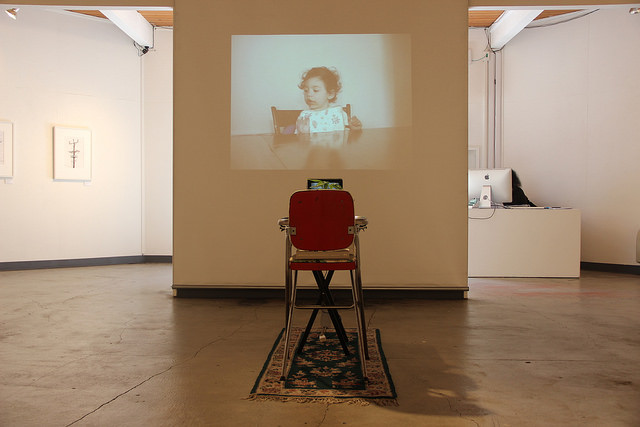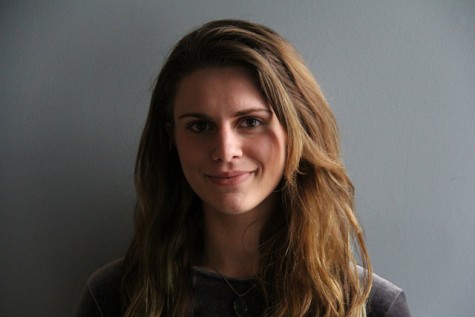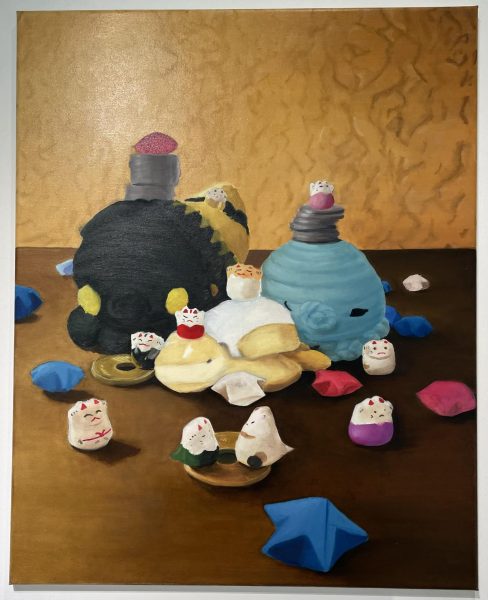“Experimentalism” opens at DVC Art Gallery
A Guianan Chestnut plant placed in front of an ipad with its front camera on stares out at the projection of a baby, artist Troy Bennett’s son, symbolizing the artist’s attribution of human characteristics to plants.
March 29, 2016
“Experimentalism is a theoretical or philosophical approach to learning that emphasizes experimentation and the parsing of one’s observations to find truth and knowledge,” said Diablo Valley College professor of art and digital media, Troy Bennett.
“Experimentalism” is the name of Bennett’s new art exhibit featured in DVC’s art gallery, which contemplates the ties between art and science. The exhibit is comprised of framed photographs on the walls and a display in the room’s center.
The center of the room draws the observer in immediately. A Guiana Chestnut plant sits in a red seated high chair facing a projection of a baby, son of the artist, being fed by a disembodied arm. According to Bennett, “The video of the child attempts to further this notion of ‘homegrown’ experimentation as a disembodied arm continuously feeds a child over a series of observational ‘sessions.’”
The projection lasts for an hour and a half, culminating in the experimenter finally becoming the subject, as the experimenter turns the camera to face his twitching eye.
Enclosing the sculpture in the center on the inner walls are pictures from Bennett’s previous series, “The Decisive Moment.” In the pictures are various sculptures similar in nature to the one found at the heart of the exhibit. All include a plant in positions generally associated with people.
According to Bennett, “These Rube Goldberg-esque works personify plants and imbue them with human psychological states, such as self-awareness, self actualization, and depression.”
Surrounding the center exhibit are walls scaled with pictures of communication towers taken from various perspectives. Each picture is titled with a number, which adds to the scientific edge of the show, as if each tower is a test subject. The pictures may appear quite similar at first, but through careful observation, the differences appear stark. The towers vary in color from grey to blue, and from wide to thin. Some look like metallic pyramids, others like crucifixes.
Bennett cites his influence for these pictures firstly from German photographers, Karl Blodsfeldt and Berndt and Hilla Becher, and secondly by the work in the center of the gallery, which approaches the concept of observing in a scientific fashion.
“The photos adopt a more minimalist approach, which contrasts with the more ready-made aesthetic of the central work,” says Bennett.
Bennett hopes that his observers appreciate the work he has done as visually appealing. However, he mostly wants his work to inspire questioning and a discussion of what it is that they are seeing and experiencing. Not just in the exhibit, but in the world around them.
The exhibit run in the DVC Art Gallery in A-305 until March 31.
















































































